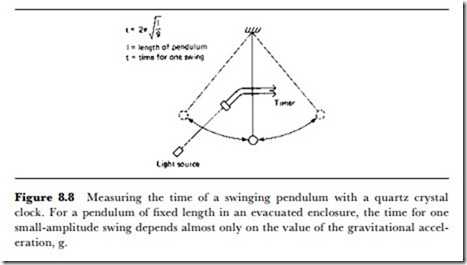Nuclear magnetic resonance
The use of nuclear magnetic resonance has become increasingly important in the last few years, both as a major method of non-destructive testing and also as a method of medical investigation. The principle, simplified, is that the combination of a very strong magnetic field and a radio frequency signal can cause the nuclei of atoms to absorb and emit radio-frequency signals at certain values of the magnetic field. The importance of the system is that the received signals can be processed by a computer into the form of an image which can show a remarkable amount of detail, so that cracks in a weld or defects in a heart are visible on the image.
The very powerful magnetic field that is required can be provided by con- ventional electromagnets when the specimens are small, but for purposes such as head and body scanning, a superconducting magnet is required with a maximum field strength of about 0.5 T. For medical purposes, the RF power is about 100-200 W, and the frequency range of signals is 1-100 MHz.
Gravitational sensing
For mineral surveying, the tiny changes in the Earth’s gravitational field caused by dense deposits of minerals can be detected and used to locate the deposits. Gravity meters of remarkable sensitivity have been available for a long time, but in recent years the addition of electronic sensors has improved both the sensitivity and the portability of gravitational meters.
The basic methods are the swinging pendulum and the spring balance. The time per swing of a pendulum depends on the gravitational acceleration, as shown in Figure 8.8, and can be measured very precisely by
allowing the pendulum to interrupt a light beam and sensing the interruption with a photocell. By the use of a quartz crystal timer, a very small variation in the swing time can be detected and read as a variation in the gravitational constant. The pendulum should be mounted in an evacuated enclosure, and should be swinging freely when the measurement is taken.
The alternative is to measure the changes in the deflection of a spring, loaded by a mass. This calls for the sensing of very small changes in length, and a laser interferometer is the best method available. Once again, the whole balance should be mounted in a vacuum to avoid the effect of air damping and air currents.
